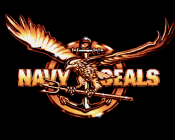SEAL Team One

SEAL Team One
SEAL Team ONE is based in Coronado, CA. Commanded by a Navy Commander (O-5), it has eight operational SEAL platoons and a headquarters element. SEAL Team ONE’s geographic area of concentration is Southeast Asia. SEAL Team ONE deploys platoons to Naval Special Warfare Unit ONE in Guam and conducts Deployments for Training (DFTs) throughout the Pacific and Central theaters.
History
SEAL Team One was commissioned on 1 January 1962. The majority of Team One's plankowners were drawn from the ranks of Underwater Demolition Teams (UDT) 11 and 12. Already skilled in underwater demolition and diving techniques, the men were soon sent to a wide variety of military schools in order to obtain the skills that would be required of small infantry units operating in the jungle. Having been restricted to near shore operations while with the UDTs, the SEALs would be expected to move further inland than any previous naval commando unit. This required an entirely new focus.
Almost immediately after its founding, two officers were sent to Vietnam to determine in what capacity the new force could provide both the Vietnamese and U.S. forces in-country. This month-long survey resulted in the recommendation that the naval commandos provide traning for Mobile Training Team 7. In March, this mission was expanded and two SEALs were sent for a six month tour to train Vietnamese in clandestine military operations. Shortly thereafter, SEAL Team One would join Team Two in providing a steady stream of advisors for the Mobile Training Teams (MTT). The MTTs would prove invaluable tools for instructing other Vietnamese units in the techniques of jungle warfare and related skills.
It was also at this time - around 1962-63 - that SEAL Team One personnel were detached from the Teams to serve with the Central Intelligence Agency's Special Operations Group (SOG).
SEAL Team One would continue to contribute heavily to the U.S. forces in Vietnam until the withdrawal of forces in 1975. Official Navy estimates concluded that One was responsible for 1,000 confirmed kills, and 370 probables. Additionally, three SEALs were awarded the Medal of Honor for their actions in the Vietnam War, all from Team One:
| LT Tom Norris | |
| LTJG Joseph Kerrey | |
| EN2 Thornton |
Other SEAL Team One Deployments of Note:
May 1975 - SEAL Team One would again be called on following the capture of the SS Mayaguez, a container vessel, off the coast of Cambodia. Delta Platoon, based in Subic Bay, Philippines, was placed on alert in the event a rescue mission was initiated.
1982 - Platoon from ST1 assisted U.S. Secret Service agents in the protection of Queen Elizabeth during the West Coast portion of her tour in the United States.























































